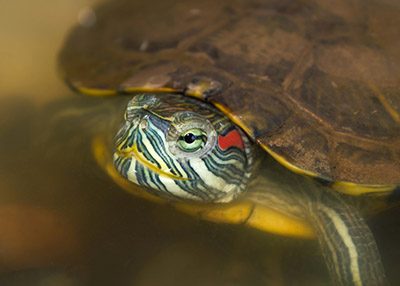Turtle Tank Size Calculator
With our turtle tank size calculator, you can identify what size tank your turtle needs to grow, thrive, and live its best life. Just insert your turtle's current size, and our calculator will take care of the rest.

If you've read anything about turtles, it's hard not to be impressed by them 🐢. Compared to dogs, cats, rats, and other furry pets, they simply eat, swim, bask, and stay in their tanks all day, but they can live to be 100 years old! (You can check how old your turtle is in the age calculator!)
If you're a new turtle parent, you might think that getting a tank with a bit of water and rocks would be enough. Yes, they generally like to keep things simple. However, it's important to provide them with the right necessities in order for them to be comfortable. A turtle's tank is not just where they live but their entire existence!
Like any living creature, turtles deserve to feel safe and happy in their homes. In their natural habitats, they spend a lot of time in the water and basking in the sun. When kept as a pet, turtles will need the optimum tank size for swimming and a land area for sunning to be happy and healthy.
What size tank does a turtle need?
So now you're probably wondering how big should your turtle tank be. Generally, it's recommended to start with at least a 50-gallon tank even if your pet turtle is smaller than 5 inches (12 cm) since they will usually grow to that size anyway.
More importantly, the tank size depends on the species of your turtle. Turtle sizes differ from species to species. Most turtle species that are kept as pets could grow up to 12 inches (30 cm). For example, the common musk turtle, one of the most popular aquatic turtle species because of how small they are, only grow up to 5 inches (12 cm) and a musk turtle tank size should be 50 gallons or more.
However, while some species will remain relatively the same size, others can grow over two feet long. For instance, the biggest tortoise you can keep as a pet is the , which grows up to 30 inches (76 cm) with an average weight of 100 pounds (45 kg)!
How to use the turtle tank size calculator?
Our turtle tank size calculator is simple. We follow the general rule that a turtle needs at least ten gallons of tank volume for every inch of shell length. While this is a good approximation, a larger tank size will always be the more suitable option for your pet turtle. In this case, bigger is always better.
Tank size (gallons) = Turtle Size (in) × 10 gallons
🙋 Are you not sure what's the volume of the tank you own? You can check in the tank volume calculator.
How large can my turtle grow?
Your turtle's size will depend on its species. The average range of measurements for turtles commonly kept as pets are:
- Red-eared Slider: 8-12 inches (20-30 cm)
- Eastern Box Turtle: 4-7 inches (10-18 cm)
- Western Painted Turtle: 7-8 inches (18 -20 cm)
- Mississippi Map Turtle: 6-10 inches (15-25 cm)
- Wood Turtle: 5-9 inches (13-23 cm)
- Musk Turtle: 3-5 inches (8-13 cm)
🔎 According to the Guinness world records, the largest turtle in the world was Dermochelys coriacea, a leatherback turtle measuring almost 9ft (3m) in length and weighing 2,016 pounds (914 kilos)!
How to set-up a turtle tank
While obtaining the ideal tank size is important, other factors such as a need for land, clean water, minimum water depth, and lighting is also essential to keep your turtle happy. Here are the basic things you'd need to set up a turtle tank.
-
Filters
Turtles generally produce a lot of waste, so a good quality filter needs to be installed in their tanks. A dirty tank could likely make your turtle sick and unhappy.
-
Lighting and heating lamps
Turtles require 12 hours of "daylight" to boost their mood (UVA light), strengthen their shell and bone growth (UVB light), and keep warm. Instead of direct sun, it's recommended to use UVA/UVB bulb lighting. Ensure that the bulb emits enough UVB light because your turtle will need a concentration of at least 3 to 8%.
⚠️ Regular exposure to UV light is dangerous for humans. The walls of your turtle's tank should have special filters to block the light. Also, when cleaning the tank, remember to turn off the light. Learn more about UV light in the sunbathing calculator.
-
Basking area
The basking dock is an area where turtles can climb to warm up and absorb their much-needed UVA and UVB light. It's essential for their metabolism, breeding, and creating their daily dose of vitamin D.
-
Water depth
Some turtles are semi-aquatic, while others are aquatic or purely live on land. As a general rule of thumb for pet turtles, the accepted depth of water should be 2 to 3 times the length of their shell.
Fact or Fiction: Turtles don't grow any bigger than their tank
This is a myth. Though some turtle species will remain relatively small, most will still grow and need ample space for living. Your turtle deserves to be happy and live its best life! We hope this turtle tank size calculator was useful in helping you provide the care and home your pet turtle needs.
